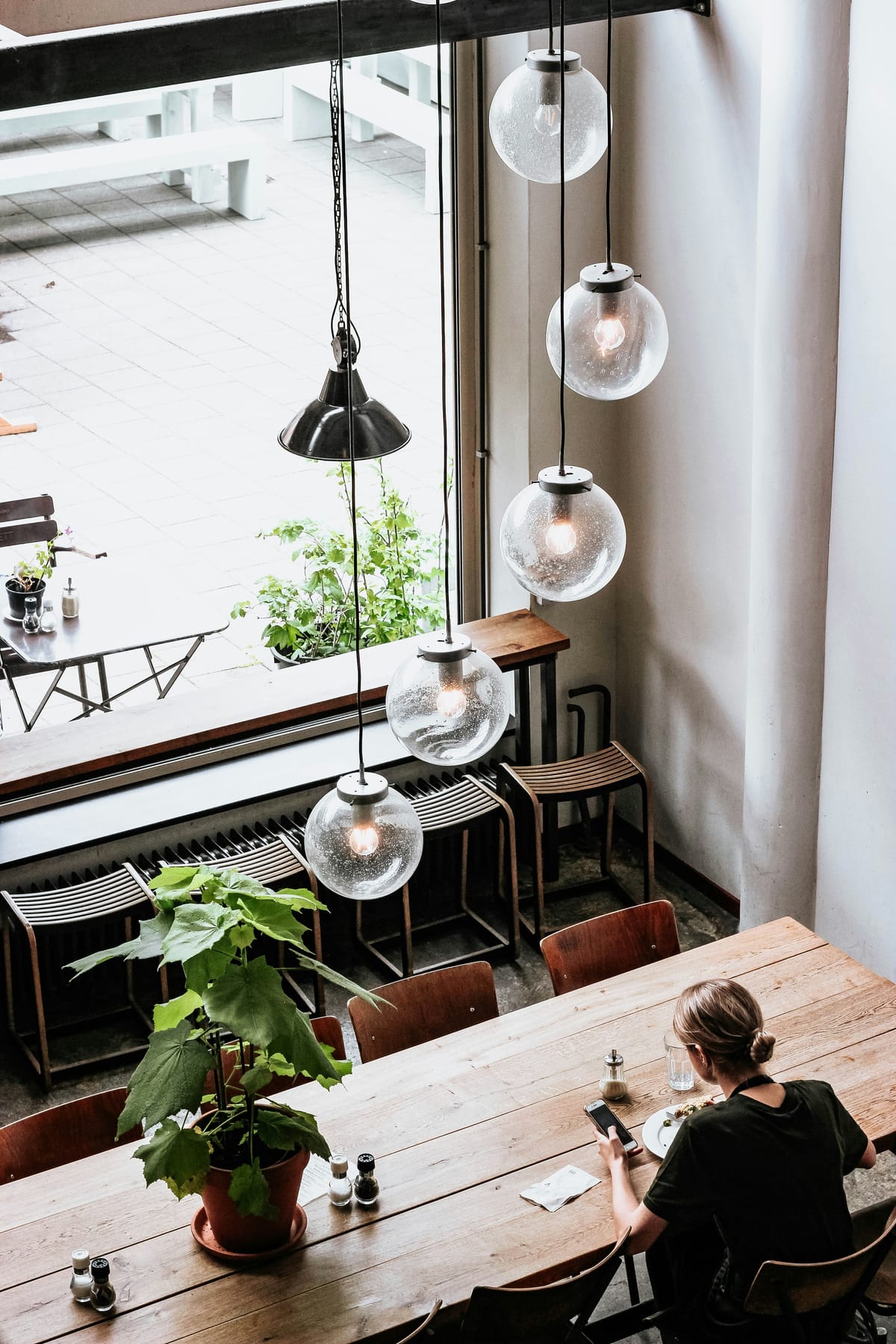The Cost of Belonging: Are Our Third Spaces for Sale?
Are third spaces—once hubs of connection—now just another commodity? As cafés, bookstores, and private clubs turn into curated experiences, are we truly connecting or just paying for belonging? This Curated Edge feature explores the shift from free spaces to commerce-driven hubs.

By Cece Lowry, Editorial Visionary & Lead Writer, Curated Edge
February 7, 2025
The hum of a coffee grinder. The chatter of strangers. The ambient murmur of a space that feels alive but not overwhelming. For years, these have been the hallmarks of what sociologists have called "third spaces" — environments outside the home (first space) and work (second space) where people gather, linger, and connect. From French salons to American diners, the third space has historically been a cornerstone of community and culture. But today, as consumerism tightens its grip on our social lives, a pressing question arises: can third spaces exist without being mediated by commerce? And if they can't, is that necessarily a bad thing?
The Evolution of the Third Space
Third spaces once thrived as places of organic connection, their primary currency being human interaction. Think of the corner cafés in Paris where intellectuals debated philosophy or the neighborhood pubs in England where friends gathered to unwind. But as our modern lives have become increasingly fragmented and digitized, these spaces have taken on a new dimension. Cafés, gyms, private clubs, and even grocery stores now double as hybrid social environments, blending community with commerce in ways that are both innovative and troubling.
Take concept stores, for example. These aren’t just places to shop; they’re immersive experiences designed to engage all five senses. A sneaker store might double as an art gallery, while a high-end boutique hosts cocktail hours and wellness workshops. These spaces sell a lifestyle as much as they sell products. But what happens when the act of "belonging" to a community becomes intrinsically tied to spending?
The Loneliness Epidemic Meets Experiential Marketing
We live in an era where loneliness is often described as a public health crisis. Studies show that prolonged loneliness can have the same impact on mortality as smoking 15 cigarettes a day. Social media, while ostensibly connecting us, has paradoxically made us lonelier, turning interaction into a performance rather than a dialogue. Brands have seized upon this vacuum, positioning their experiential spaces as antidotes to our collective isolation.
Consider the rise of hybrid spaces: a café within a bookstore, a bar within a grocery store, a running club that requires a membership fee and branded gear. These environments are designed to foster connection, but always with a transactional undertone. The question, then, isn’t just whether commerce is driving community but whether we’ve become so starved for connection that we’re willing to accept community on these terms.
What We Took for Granted
Social media commentary highlights a deeper truth: many of the spaces we now lament as lost—libraries, arcades, malls, and late-night theaters—once existed as true third spaces. These environments were designed for lingering, not transactions. Yet, as one can astutely observe, these spaces were taken for granted and allowed to disappear. Now, alternatives often come with a cost.
Spaces like maker spaces or galleries open late into the night could bridge the gap, offering community-driven initiatives without an overt commercial slant. But the challenge remains: can they compete with the polished allure of consumer-driven hybrids?
The Case for and Against Commerce-Driven Third Spaces
The Optimist’s Perspective: Commerce as a Catalyst
Proponents argue that commerce-driven third spaces are merely an evolution of the public square. They provide structure and amenities that organic spaces often lack. A bookstore café, for instance, offers the reliability of Wi-Fi and a curated environment conducive to interaction. These spaces also reflect a democratization of taste: you don’t need to be an intellectual to participate in a panel discussion at a boutique or a sommelier to enjoy a wine-tasting event in a grocery store.
From this perspective, commerce isn’t the enemy; it’s a facilitator. These spaces provide a middle ground between the impersonal sterility of social media and the logistical hurdles of organizing in public parks or community centers. They’re accessible, comfortable, and often beautifully designed, drawing people together in ways that feel intentional rather than forced.
The Cynic’s Perspective: Community for Sale
Critics, however, see these spaces as emblematic of late-stage capitalism’s insidious reach. The very notion of community becomes commodified, with belonging contingent on one’s purchasing power. This creates an exclusivity that undermines the egalitarian spirit of the third space. A private social club that costs $200 a month to join isn’t fostering community; it’s curating clientele.
Moreover, the consumerist model often prioritizes profit over genuine connection. A café with a time limit on seating or a co-working space that charges for every amenity doesn’t encourage lingering or organic interaction. Instead, it subtly enforces a transactional mindset: you can stay as long as you’re paying.
Exploring Alternative Third Spaces
If traditional third spaces are increasingly tied to commerce, what are the alternatives? Can we reclaim spaces that prioritize connection over consumption?
- Public Libraries: Long overlooked, libraries remain one of the few genuinely free third spaces. In the spirit of Paris’s literary salons, there is an opportunity for bookstores to evolve into modern-day intellectual hubs by hosting discussions, readings, and workshops—turning them into literary salons that inspire deeper engagement with the written word.
- Cultural Centers: Local museums and cultural hubs often host free or low-cost events designed to bring people together without the expectation of a purchase.
- Open Streets Initiatives: Cities like New York, Chicago, and Paris are experimenting with pedestrian-only zones that transform urban spaces into communal gathering spots. In Chicago, initiatives like the closure of major streets for outdoor festivals and markets create a vibrant, inclusive atmosphere for residents and visitors alike. Pop-up performances, food trucks, and open-air seating encourage interaction without requiring an entry fee.
- Reimagined Parks: Beyond the green expanse, think community gardens, outdoor amphitheaters, and interactive art installations. These spaces invite engagement in ways that feel participatory rather than passive.
- Grocery Stores as Community Hubs: Grocery stores are increasingly adding cafés, bars, and lounge areas—but they could go even further. Imagine communal kitchens hosting cooking classes, or small event spaces for community-led discussions and gatherings. These initiatives could transform the act of shopping into a more thoughtful, shared experience, fostering connection through substantive consumption.
The New Third Space: A Reflection of Us
Ultimately, the new third space is a mirror of contemporary culture. It reflects our yearning for connection, our aesthetic sensibilities, and yes, our consumerist tendencies. The café in the grocery store isn’t just a novelty; it’s a commentary on how our lives have become increasingly hybridized, with boundaries between work, leisure, and consumption blurring to the point of nonexistence.
The rise of commerce-driven community spaces asks us to confront uncomfortable questions about ourselves: Are we truly seeking connection or chasing an Instagrammable experience? Do we value convenience over authenticity? And perhaps most crucially, can we imagine a version of community that isn’t mediated by money?
A Space for Debate
Like any good third space, this article invites you to linger, reflect, and contribute to the conversation. Whether you see commerce as a necessary evolution of the third space or as a corrosive force eroding its original spirit, the dialogue itself is the point. Because at the heart of the third space is the belief that ideas—like people—thrive when they’re given room to breathe.
Cece Lowry is the Editorial Visionary of The Curated Edge, where creativity meets innovation. Her work delves into the intersections of art, lifestyle, entertainment, and storytelling, offering fresh perspectives in a world eager for authenticity and depth.
